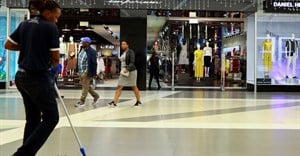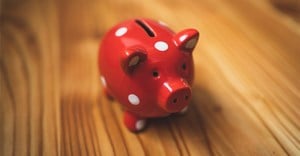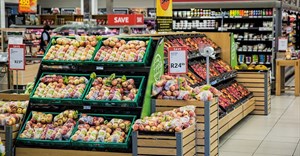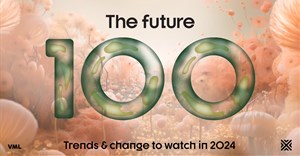Trending
Elections 2024
Jobs
- Product Planner Johannesburg
The cost of SA's alcohol bans and their impact on consumer behaviour

The report, entitled Recovering from a Sobering Situation, offers in-depth data and insights, against the backdrop of the local liquor sector heading into uncharted territory due to the country's globally unprecedented liquor bans.
The data is drawn from a variety of industries and included off-site consumption – namely grocery chains, self-service, counter service and semi-wholesalers and redistributors – as well as on-site consumption at licensed taverns, local bars and pubs. Not included were restaurants, hotels, markets and events.
Changed consumers and shopping habits
NielsenIQ SSA commercial director Ged Nooy explains, “What the study found is that with each new wave and lockdown; immediate pre- and post-lockdown behaviour changes are merging into a pattern and people are not reverting to behaviours, and in certain cases products, that were favoured before Covid-19. The reality is a changed consumer and changed in-store shopping patterns.”
Looking back at the financial fallout of the liquor ban the report found that after the first prohibition (June 2020) the sector was able to recover two weeks of lost sales but these gains were short-lived and rapidly declined in the weeks that followed. Consumers also carefully considered which categories to purchase in case of re-closure and spirits and wine captured 78% of incremental sales in the weeks post-prohibition.
Sales after the second prohibition (September 2020) also initially gained ground for three weeks but in the ten weeks that followed were less than the same period last year (week ending 15 November 2020) and by the end of 2020, liquor sales were down by 36% year on year (2020 vs 2019).
Beer takes a beating
After the end of the third ban in January this year, liquor categories performed quite differently in terms of regained sales and growth. In the first quarter of 2021, liquor grew across all categories except beer, which remained under pressure driven by a decline in on-consumption in taverns, local bars and pubs (licensed), which has resulted in less demand through the wholesalers.
Numerous factors have contributed to this including a decline in those who are buying beer in taverns. The increase in constrained consumers (those impacted by job and income loss) – of whom 66% are newly constrained (NielsenIQ Consumer Insights Study 2020) – has led to altered patterns and purchase behaviour to better manage their reduced spending. They have been heavily impacted by pressure on the economy and their finances/income and they simply don’t have the cash to spend in taverns.
So, despite beer experiencing single-digit growth in March 2021, due to the absolute size of beer in the category, sales were 33% less versus the same period last year (NielsenIQ RMS 5-week sales period ending 04/04/21). At a total market level (on and off con consumption) beer was therefore undeniably under pressure.
Wine and spirits fight back
On the upside, wine and spirits showed the most growth of all liquor categories and picked up in terms of sales and volume in Q1, 2021. Of this, box wine was the biggest contributor to volume. Consumers are moving to ‘longer lasting’ liquor options which are clearly shown by them opting for box wine, which they perceive as better value for money and at the right price point for stocking up.
Nooy comments; “This speaks to the trends we saw after the first ban where consumers were buying longer-lasting bottles. This stocking up also reduces the number of trips to shops which is a big consideration for consumers given current health and safety concerns. This category has also seen notable product innovation/adaptation is the introduction of ‘premium boxed wines’ to counter previous negative perceptions as boxed wine being a cheap option.
“During the last few weeks of the first quarter of 2021, we also saw stimulation in flavoured alcoholic beverages (FABs). Interestingly, prior to Covid-19 large cans averaged 25-28% of the total category sales but they have gained in importance and during Q1, 2021 commanded 33% of sales.
“One of the reasons for this is that people are not going out or entertaining as much. They are happy to buy ‘longer-lasting bottles’ like quarts and box wine as there is no need to impress their guests and image is no longer so important. In line with this, the industry has also seen a dip in sales of premium gin and has moved away from the incredible growth seen in the ultra-premium gin category before Covid-19.”
Insulated high-end consumers continue to spoil themselves
It is important to remember that although they only make up 2% in this market insulated consumers (those who have not been impacted by job losses and the resultant wallet squeeze) and whose spending remains fairly resilient, although they are experiencing some reset
behaviours due to their altered living, working and entertaining circumstances. However, they still want to experiment and innovation and product launches still appeal to them.
These are the consumers who would normally travel for an overseas holiday at least once a year who appreciate high-end goods and still want to spoil themselves with expensive local holiday expensive and premium whiskey, for example.
The big question now is how do manufacturers and retailers reach this highly desirable segment of consumers who are still not as keen to go out. This is where NielsenIQ highlights the continued rise of the omnishopper experience using channels such as social media endorsements, whisky and wine clubs, and innovative online shopping options, amongst the insights contained within the report.




















